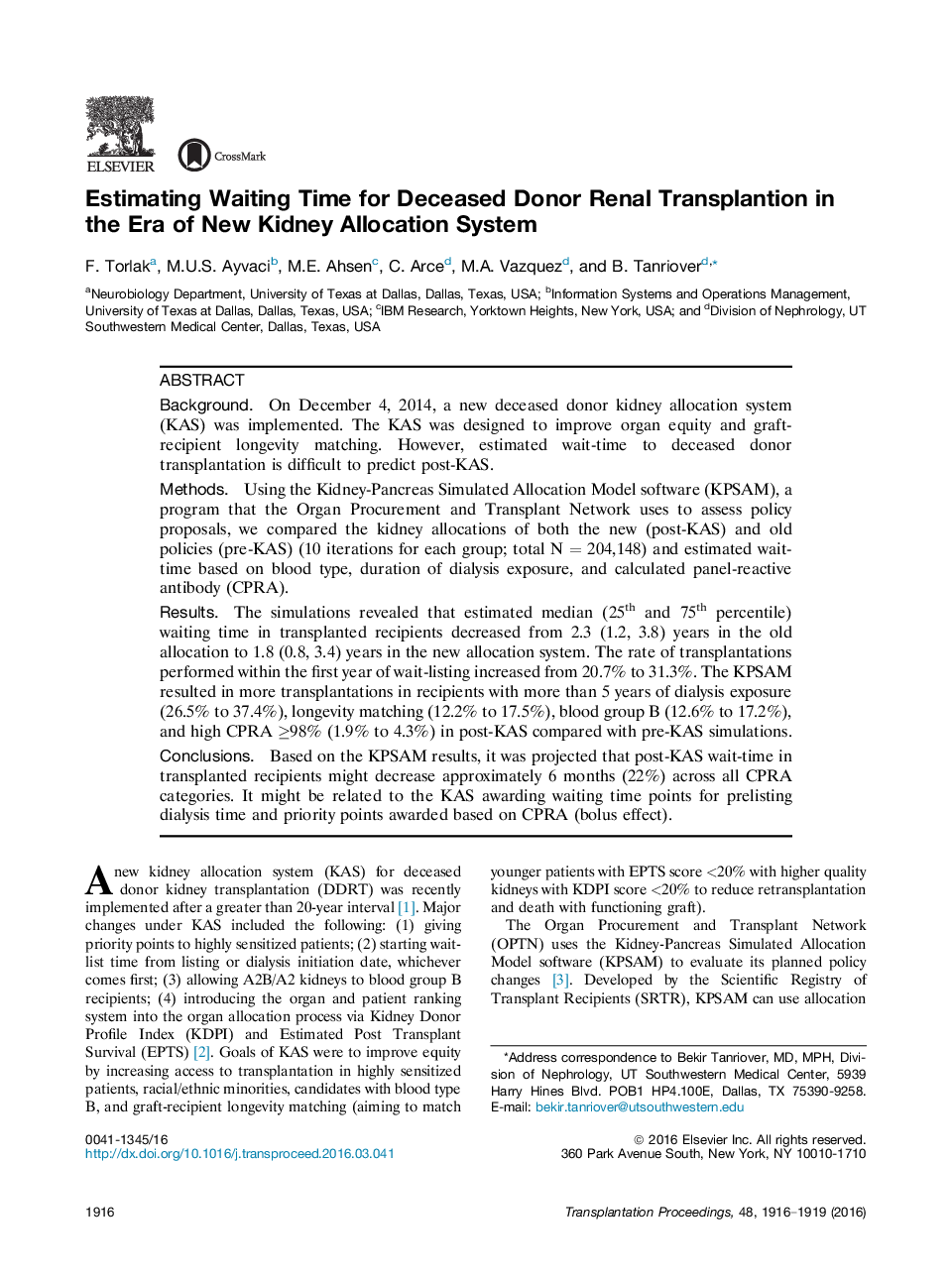| Article ID | Journal | Published Year | Pages | File Type |
|---|---|---|---|---|
| 5729122 | Transplantation Proceedings | 2016 | 4 Pages |
•Based on the KPSAM results, among transplant recipient, post-KAS median waiting time deceased donor transplantation might decrease 6 months.•The rate of transplantations performed within the first year of waitlisting may increase from 20.7% to 31.3%.•The KAS may improve for minorities, highly sensitized patients, and younger candidates.
BackgroundOn December 4, 2014, a new deceased donor kidney allocation system (KAS) was implemented. The KAS was designed to improve organ equity and graft-recipient longevity matching. However, estimated wait-time to deceased donor transplantation is difficult to predict post-KAS.MethodsUsing the Kidney-Pancreas Simulated Allocation Model software (KPSAM), a program that the Organ Procurement and Transplant Network uses to assess policy proposals, we compared the kidney allocations of both the new (post-KAS) and old policies (pre-KAS) (10 iterations for each group; total N = 204,148) and estimated wait-time based on blood type, duration of dialysis exposure, and calculated panel-reactive antibody (CPRA).ResultsThe simulations revealed that estimated median (25th and 75th percentile) waiting time in transplanted recipients decreased from 2.3 (1.2, 3.8) years in the old allocation to 1.8 (0.8, 3.4) years in the new allocation system. The rate of transplantations performed within the first year of wait-listing increased from 20.7% to 31.3%. The KPSAM resulted in more transplantations in recipients with more than 5 years of dialysis exposure (26.5% to 37.4%), longevity matching (12.2% to 17.5%), blood group B (12.6% to 17.2%), and high CPRA ≥98% (1.9% to 4.3%) in post-KAS compared with pre-KAS simulations.ConclusionsBased on the KPSAM results, it was projected that post-KAS wait-time in transplanted recipients might decrease approximately 6 months (22%) across all CPRA categories. It might be related to the KAS awarding waiting time points for prelisting dialysis time and priority points awarded based on CPRA (bolus effect).
